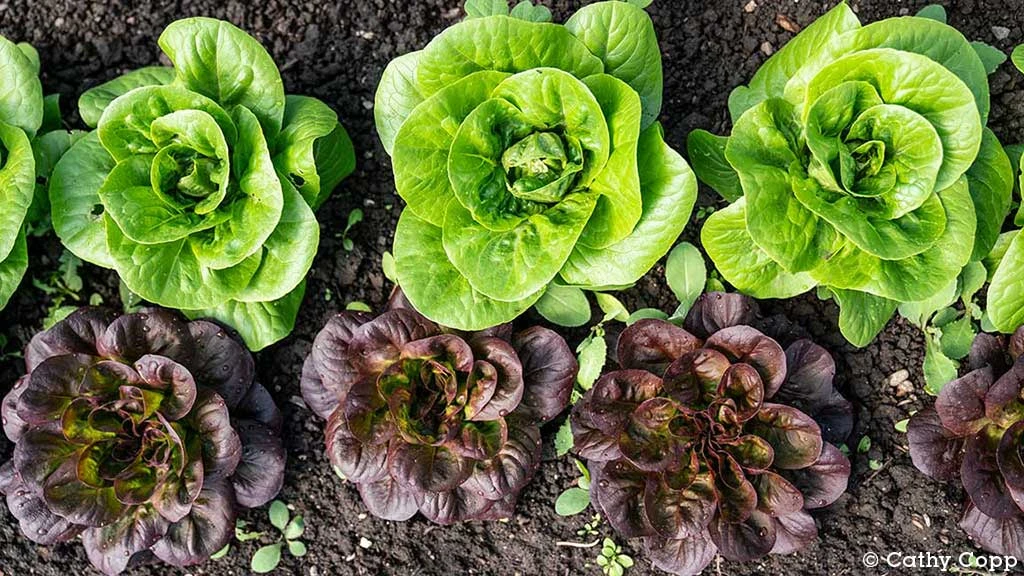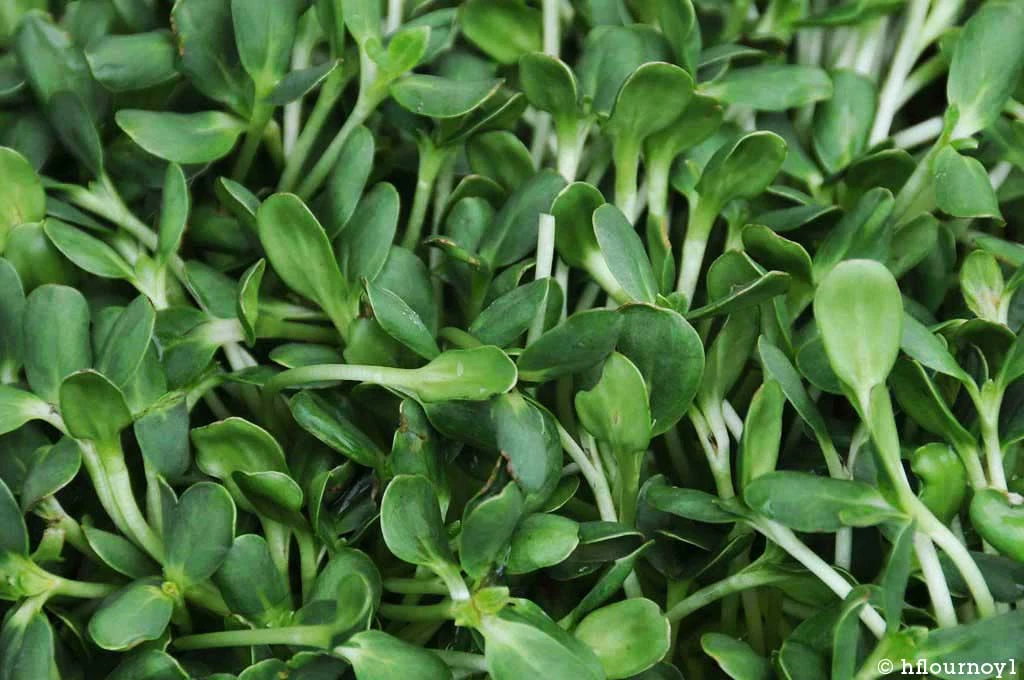Growing your own garden is an incredible way to connect deeper with your food sources and foster a more sustainable lifestyle… not to mention the fact that you’ll save money on groceries. That said, although gardening outdoors is fairly common (your grandmother can probably help you there), many of us don’t have access to an outdoor space to create a garden.
Whether you live in a high-rise apartment building, a restrictive rental property, are trying to beat out a harsh winter climate or simply don’t have available yard space at home… gardening is still possible. Modern technology has made it possible to set up a home garden almost anywhere, including in indoor spaces with no natural light.
Maybe you spent time tilling the earth on a VISIONS program and want to keep training your green thumb, or maybe you haven’t yet taken the leap and come out to join one of our programs yet. Either way, if you’re keen to learn more about indoor gardening, you’ve come to the right place.

Can You Have a Garden Indoors?
The short answer is… Yes! You can have a garden inside a Manhattan apartment just like you can have a garden out under the open sky on a farm & ranch in Montana.
The concept is the same. Your plants need light, fresh air, water, soil and space to thrive, and all these things can be found inside just as well as outside. It will take a bit of effort, however, and depending on your access to natural light, you may need to invest in a supplementary lighting source. Inadequate light is the #1 reason why most indoor gardens fail.
Read on to find out more…
The Pros and Cons of Indoor Gardens
So, let’s talk about the bad news first. There are some drawbacks to indoor gardening, it’s just a fact. Plants grown indoors will almost always experience a lower yield than those grown outside, at least if you’re using only natural light or minimal supplementary light.

In addition to the low light levels, there are no pollinating insects indoors, nor is there wind to help circulate the air and give your plant the carbon dioxide it needs to thrive. Overall, plants grown inside will usually take a lot more TLC than outdoor crops… but the payoff is more than worth it!
One of the great things about indoor gardens, however, is that you control 100% of the environment for your plants. Your plants are safe from the weather and pests. You maintain the temperature, water, soil quality, airflow, everything.
Because of that, an indoor garden has the potential to be a much more reliable source of produce than an outdoor garden. That said, whether indoors or outdoors, pests and diseases can find your plants if you aren’t careful.
What Do I Need for an Indoor Garden?
An indoor garden, like we mentioned above, requires the same basic ingredients as a traditional garden: growing space, light, fresh air, soil and water.
Here are a few components you’ll need to get started:
Growing Space
Pots or other planters will give you plants space to grow. A pot or container that is around four inches deep will do the job for most leafy greens. Some specific plants, like carrots, which need about six inches, will require a bit more.
As always, we urge you to avoid shopping for new containers or pots and instead repurpose a container you already have. Dresser drawers, window boxes, bakery boxes, and more can all serve as excellent planters for your indoor garden. Be sure to add plastic trays beneath your containers to catch water drips.

Soil
Look for a quality organic, all-purpose potting mix to give your plants the nutrients they need. Fish emulsion (organic liquid fertilizer made from fish byproduct) works well as a fertilizer when your plants show signs of malnutrition.

Seeds or Seedlings
You’ll need to buy seeds or purchase seedlings (small plants). Note that most herbs mature slowly, so if you grow from seedlings you’ll be able to secure a faster harvest. Because of this, growing from seedlings for your first crop can be helpful, at least until you get the hang of things.
And now for the big one….
Light (Natural or Artificial)
Every plant needs sufficient light to complete photosynthesis and thrive, and lack of light is perhaps the #1 reason why indoor gardens fail. If you have access to a large, well-lit window, and live in a generally sunny clime without much sun blockage, you may not need much supplemental lighting. For most of us, however, it’s helpful to have some supplemental lighting source on hand if we’re serious about our indoor garden. Indoor plants grow best under full-spectrum light bulbs (bulbs reproducing the full spectrum of natural solar light), which can be found both fluorescent and LED. That said, LED lighting is more environmentally-friendly, and generally more effective.
There are a few different things that you’ll need to take into account with your light source. The big two are DURATION and INTENSITY.
Duration
No matter what plants live in your garden, they don’t need light 24/7. Plants need to respirate (use the sugars produced during photosynthesis + oxygen to produce energy) during the nighttime hours, and if you don’t give them a little darkness now and then they’ll be unable to. Different plants require a different ratio of light to dark, and this ratio is critical for a number of biological processes, including growth rate. Be careful here, because if you’re using only natural light, your plant may only get sun for a few hours a day, when the sun is on the same side of the sky as your window. A supplemental lighting setup, therefore, is a great boon, and power strips with timers make it a cinch to get your lighting right.
Most plants fall into three categories of light duration: short-day, long-day or day-neutral.
Short-day plants thrive on less than 12 hours of daily light.
Long-day plants should receive 14 to 18 hours of light each day. Vegetable seedlings and garden flowers are long-day plants.
Day-neutral plants simply need a traditional 8 to 12 hours of light all year-round.
Do your research and find out exactly how much light your plants need before getting started.
Intensity
The intensity of light that your plant receives is as equally important as the duration. Intensity is both determined by the brightness of the bulb and how close your plant is to the light. Different plants need different light intensities. Different plants require different intensities of light, so make sure you do your research.
What Can You Grow in an Indoor Garden?
While you can definitely grow almost any plant indoors with the right setup, some plants are better suited than others for indoor gardening. This is particularly true if you’re looking to get by with just natural light from windows and other openings, not using any supplemental lighting sources, or if you have limited space to grow.
There are a number of plants that grow well indoors, and you’ll find plenty of exhaustive lists online. We’ll go over five good options to get you started.
Carrots
Carrots are hardy veggies and grow well inside. Smaller carrot varieties, naturally, adapt better to indoor gardens, because they both require less space and mature faster. For carrots, using a long container, like a window box, is a good choice. Keep your soil moist, and within two weeks your carrot seeds should germinate, though full grow time varies based on your carrot variety.

Lettuce
Lettuce (and other salad greens like swiss chard and spinach) is both shallow-rooted and fast-growing, so it’s perfect for indoor gardens. You’ll need a shallow planter (two to four inches deep), and a mix of moist, well-draining soil. Keep your soil moist and you should see your seeds germinate within a week.

Harvest once your lettuce is about four to six inches, trimming the outer leaves to allow the plant to continue growing from the center.
Microgreens
No indoor garden would be complete without microgreens! Microgreens are basically mini sprouts that are easy to grow inside, because they grow fast and don’t take up much space. Microgreens aren’t just one plant, either, they’re usually a mix of seeds from various herbs and greens, including Swiss chard, basil, beets, radishes and kale.
You’ll harvest your greens as seedlings, so you only need about two inches of soil at most. Barely cover your seeds with a thin top layer, and you should see them germinate after a couple of days.
It’s time to harvest your microgreens when the seedlings have at least two sets of leaves. Cut the leaves off at ground level, and if you’re lucky you might get another crop soon!

Garlic Greens
Plant spare garlic cloves in a smaller planter and water them, and you’ll have some garlic greens within a few weeks! You’ll need to start harvesting your garlic once it reaches about eight to ten inches.
Note: You probably won’t be able to grow full-on garlic bulbs indoors, but garlic greens are a stellar substitute, something like a cross between scallions and garlic.
Mushrooms
Mushrooms are the oddball on this list because they’re actually fungi, not plants. That said, mushrooms are one of the easiest veggies to grow indoors. They require only a few hours of light a day, and dim light at that (mushrooms can be grown underground!), and grow relatively fast, with varieties like oyster mushrooms ready to harvest in a couple of weeks, and some varieties growing even faster than that.
If you’re a bit nervous about the adequacy of your light source and don’t have access to supplementary lighting, mushrooms are your best bet to get started!
Tips and Tricks for Indoor GardeninG
There are a few tips to keep in mind if you’re considering growing vegetables indoors.
- Give ‘Em A Good Home. Make sure you’re picking containers with enough holes for adequate drainage, and make sure the containers are the right size for the plant you’re growing. Both containers that are too big and containers that are too small will harm your plant’s progress.
- Mix, Mix, Mix. Make sure you’re using a high-quality potting mix, not simple garden soil. Mixes specific to potting typically include vermiculite or perlite, which provides better drainage.
- Light is KEY! We’ve mentioned that natural light can work depending on your home space and the weather where you live… but if you’re serious about having a successful and diverse indoor garden, you probably want supplemental light on hand.
Now, gather your supplies and start planting your first crop!






